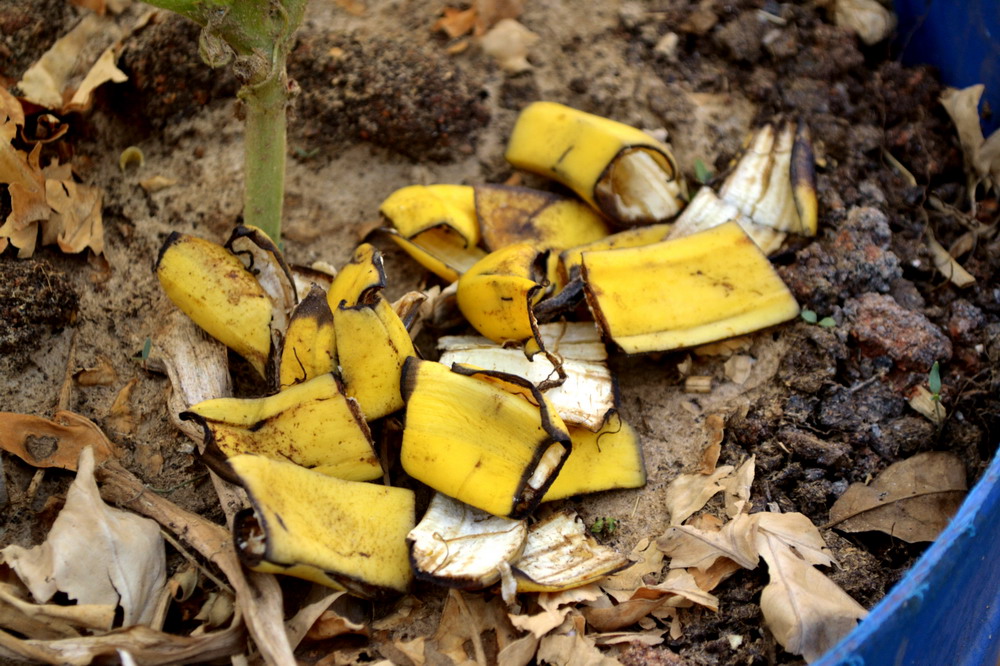How To Fertilize Your Garden Without Composting

Keeping your soil healthy and well fed is vital when it comes to growing productive, beautiful edibles. However, you don’t have to rely on store bought chemical fertilizers. Chemical fertilizers work quickly because they feed the plant directly, but they don’t actually build up the soil with nutrients. And, according to The Grow Network, unused nutrients leech out of the soil while harmful inorganic by-products are often left behind. That’s why long-term use of chemical fertilizers on your edibles isn’t ideal.
Organic fertilizer on the other hand adds nutrients to the soil, which then become available for plants to use. Results will be slower, but longer lasting. The most important nutrients to a plant are nitrogen (leaf growth), phosphorous (root growth), and potassium (overall growth, including fruits and flowers), followed by calcium, magnesium, and sulfur.
As always, research your plants to better understand their nutrient needs throughout the growing season. Also, look into getting your soil tested through your state’s or local county’s extension office so you’ll know which nutrients to favor during your fertilizing schedule.
Although composting is the best way to ensure overall soil health in an organic garden, there are alternatives to naturally fertilize your garden.
1. Herb Tea
No Dig Vegetable Garden suggests using comfrey, nettle, parsley, borage, and/or yarrow to create an herb tea, to use as a liquid fertilizer on your plants. You can also use plantain and dandelion, which are common herbs that are considered weeds, and found in majority of backyards across the U.S. For any mixture of these herbs, nearly fill a 5-gallon bucket with crushed and chopped plant material, leaving enough room to cover with water. If possible, use rainwater or use tablets to remove chlorine from tap water. Leave the mixture for two weeks in a secluded area (it gets smelly), or until the plant material is well rotted. Once steeped, strain out the liquid and further dilute it, using 1 part tea to 1 part water. Pour directly around plant roots.
2. All-purpose fertilizer
This one, provided by Mother Earth News, isn’t exactly a money saver. But the benefits to your garden are worth the investment! Plus, with a yearly application, ideally at the time of planting, this fertilizer should be sufficient for the standard home vegetable garden. For heavy feeders, like Brussels sprouts, spinach, and leeks, consider using small amounts of the mixture around the plant’s roots every few weeks.
Mix uniformly and blend into soil using a hoe or spade:
– 4 parts seed meal (substitute with organic grass clippings if desired)
– 1/4 part ordinary agricultural lime, best finely ground
– 1/2 part agricultural lime (or 1/4 part gypsum)
– 1/2 part dolomitic lime
– 1 part bone meal or rock phosphate
– 1/2 to 1 part kelp meal (or 1 part basalt dust)
3. Fertilizer made from eggshells, Epsom salt, and banana peels
Eggshells, Epsom salt, and banana peels all offer major benefits to your garden as individual fertilizers. So, why not combine them into one all-purpose fertilizer?
According to The Grow Network, eggshells contain nitrogen, phosphoric acid, and they also help to replenish calcium, which can be pulled out of the soil pretty quickly during heavy growth periods. Eggshells are useful dried, ground up into a powder, and sprinkled in the garden.
Epsom salt can benefit your entire garden, offering a healthy dose of magnesium and sulfur. To use on its own, Natural Living Ideas suggests mixing 1 tablespoon of Epsom salt to 1 gallon of water and using as a foliar spray bi-weekly. The best time to use the spray is in the early morning.
The Frugal Chicken offers a variety of uses for banana peels, which adds potassium, phosphorous, and calcium to the soil, along with additional minerals that plants need. You could just chop up a peel and bury it just beneath the soil where it will break down. Or, you can follow the recipe below, combining the benefits of all three of these amazing natural fertilizers: Eggshells, Epsom salt, and banana peels.
The recipe comes from Little House Living:
Grind 4 dried banana peels and 3 dried eggshells together into a fine powder using a coffee grinder or blender. Add the powder, along with 1 tablespoon of Epsom salt to a 32-ounce bottle. Add water until nearly full and stir until everything dissolves. The recipe is created to use as a spray, but we would recommend using it to directly water your plants instead. Try mixing it in a pitcher to make it easier.


